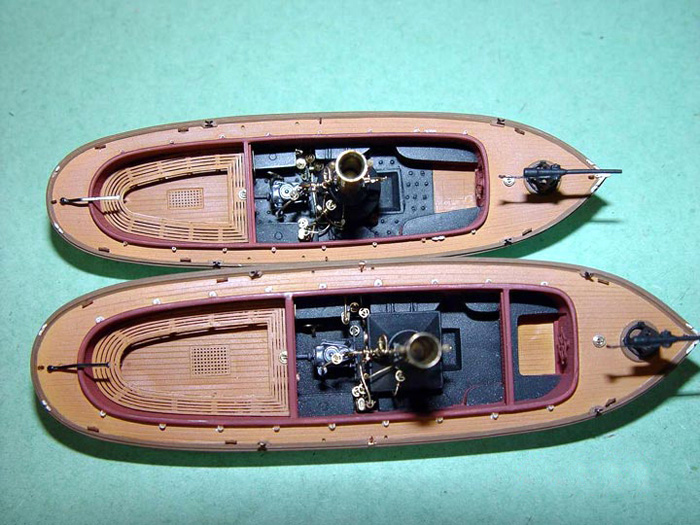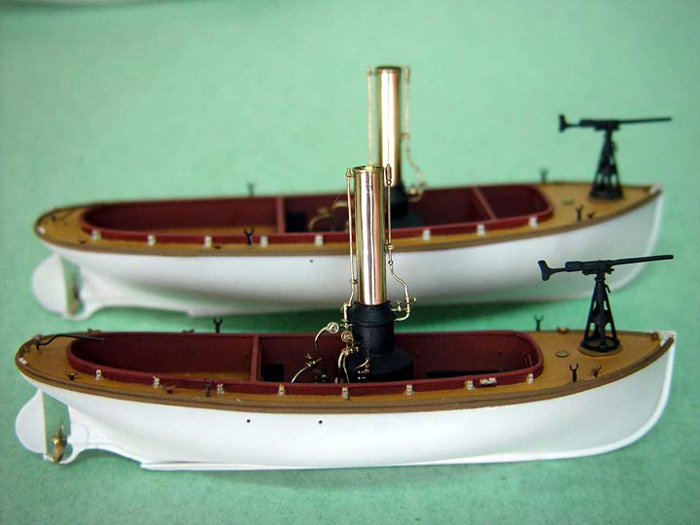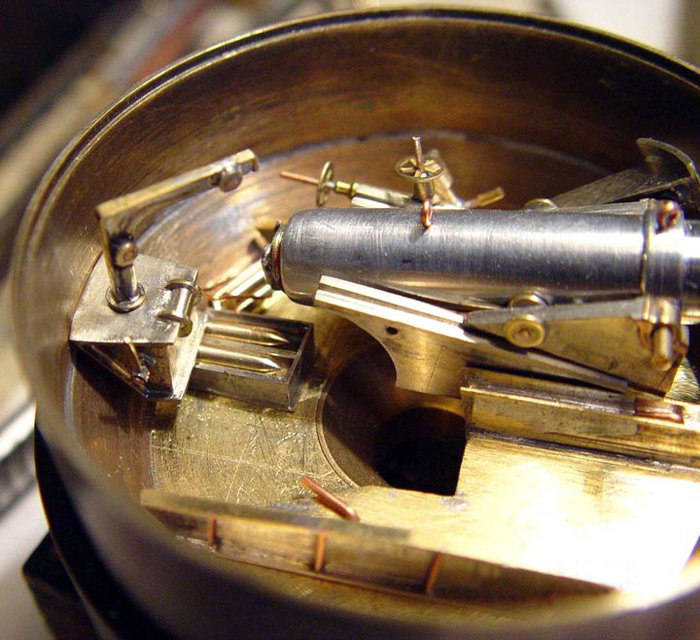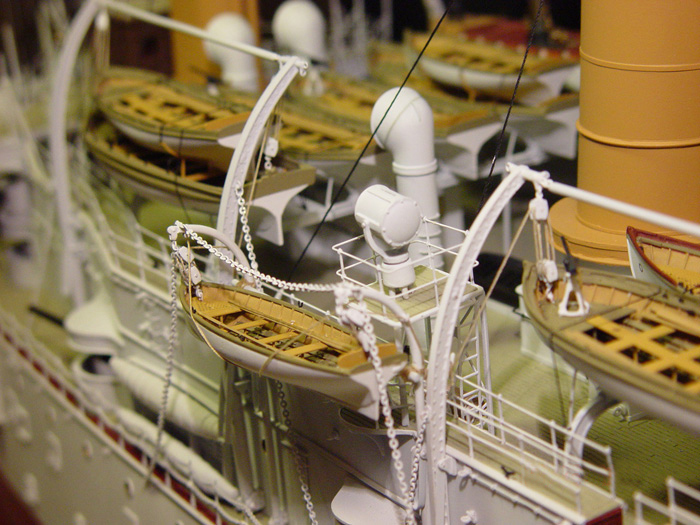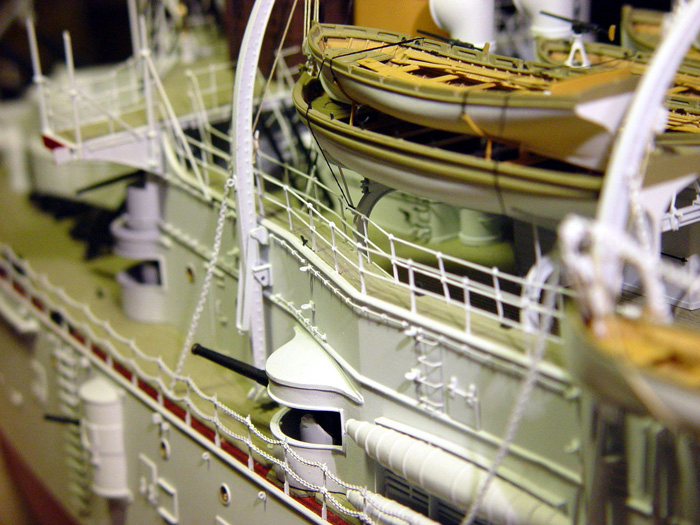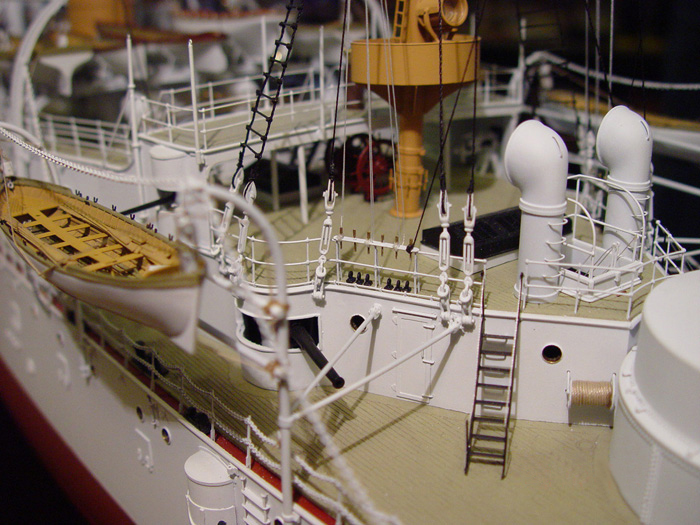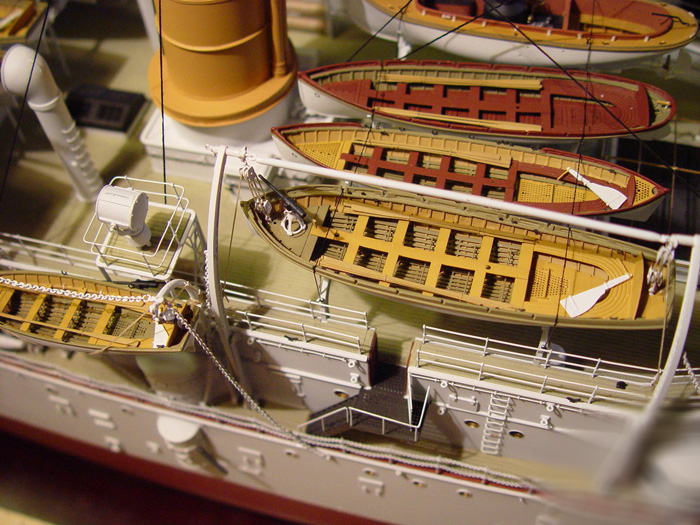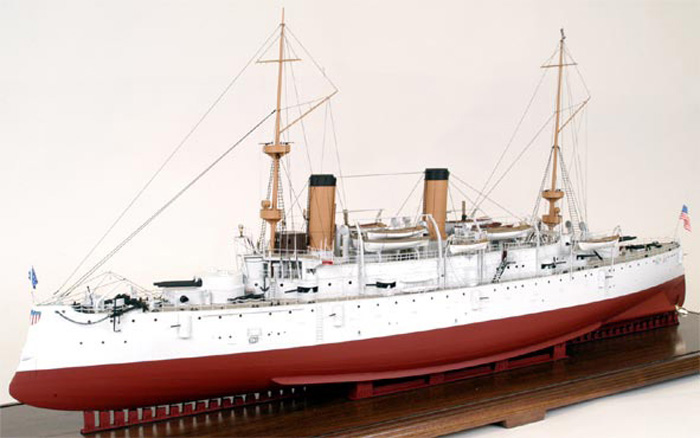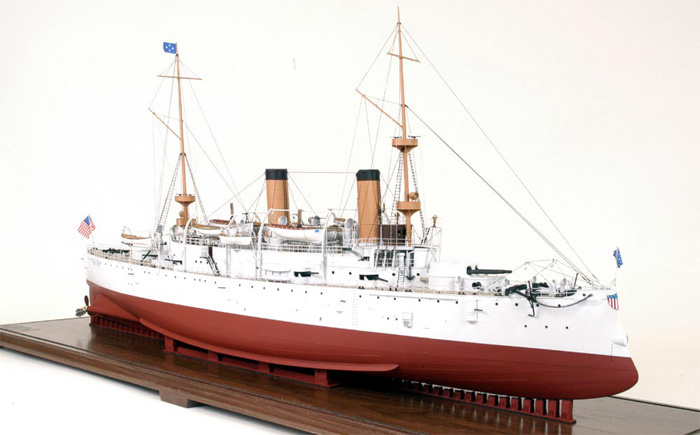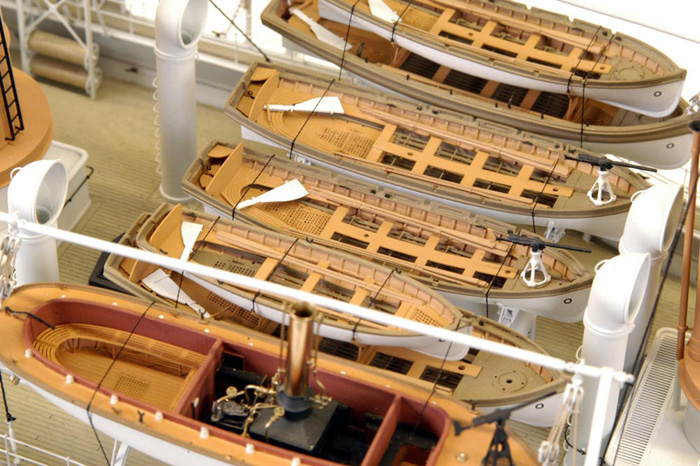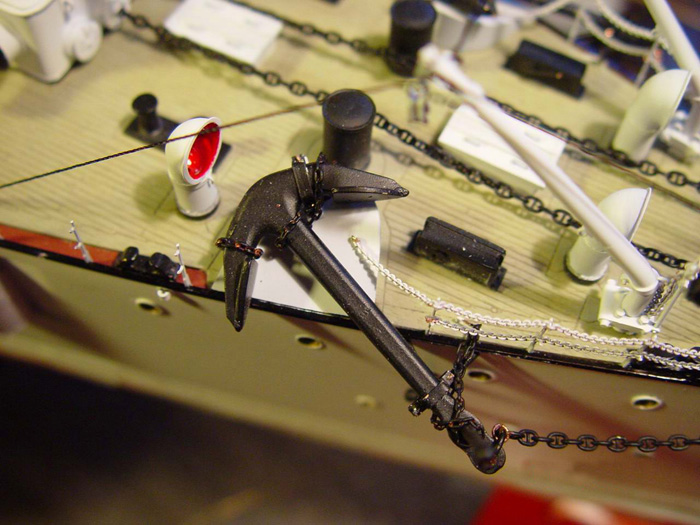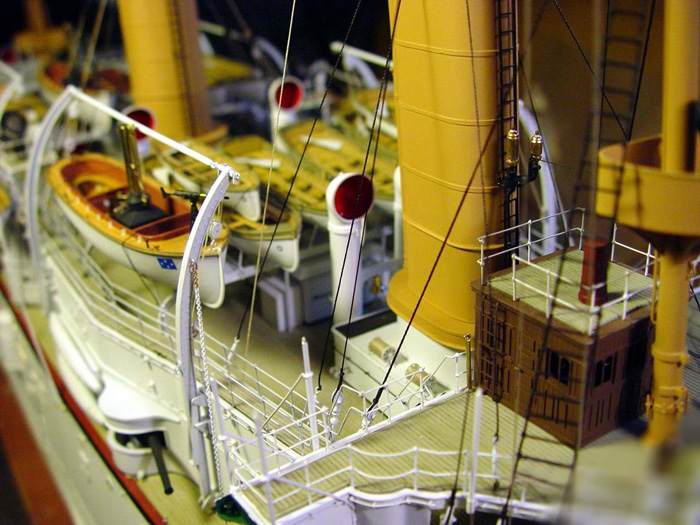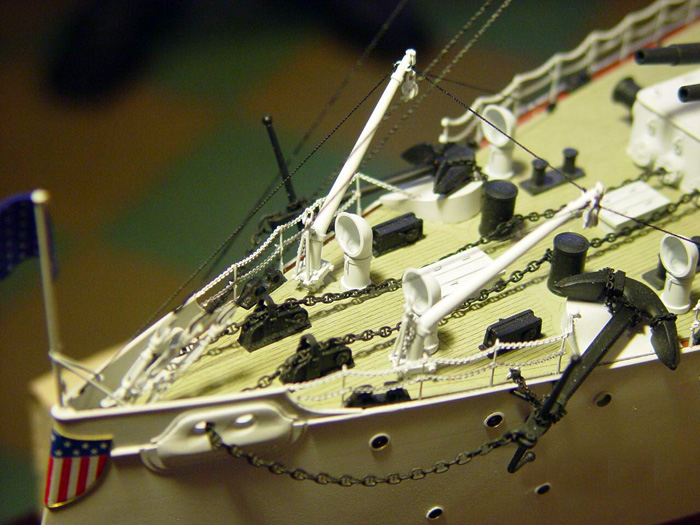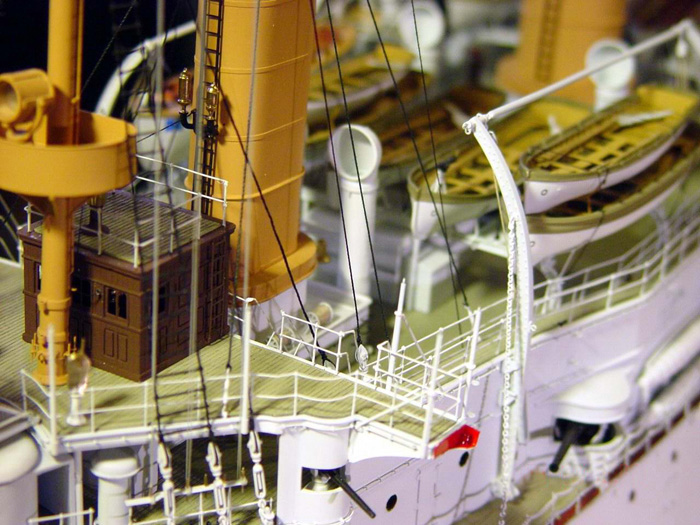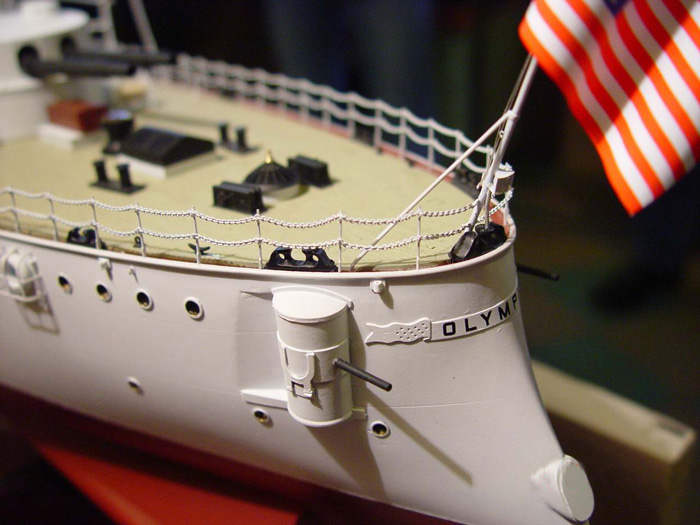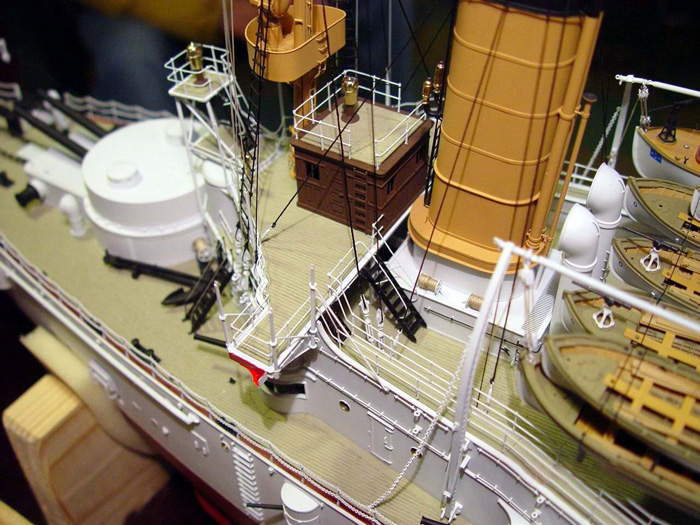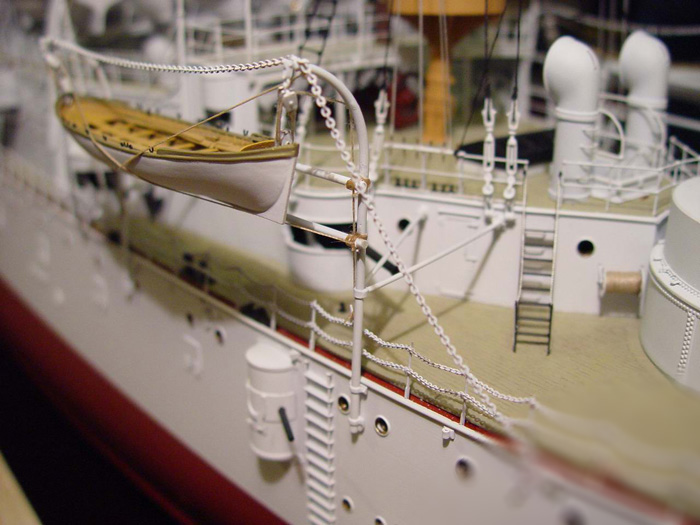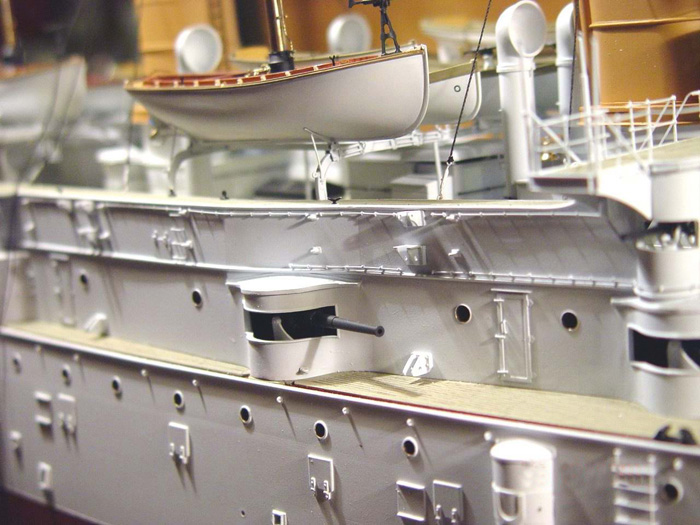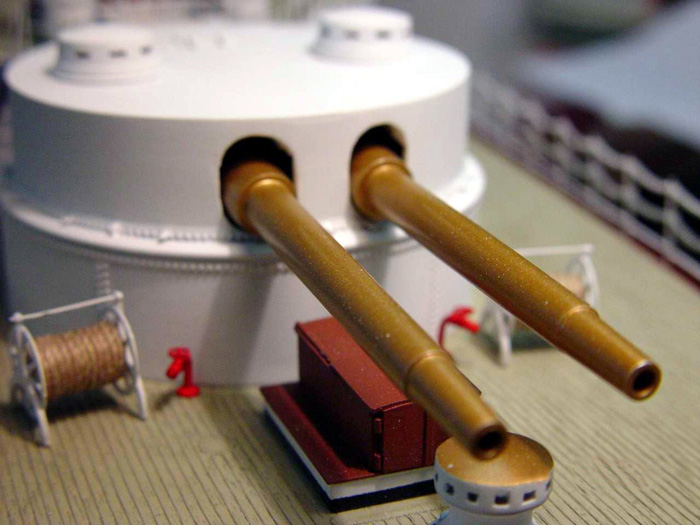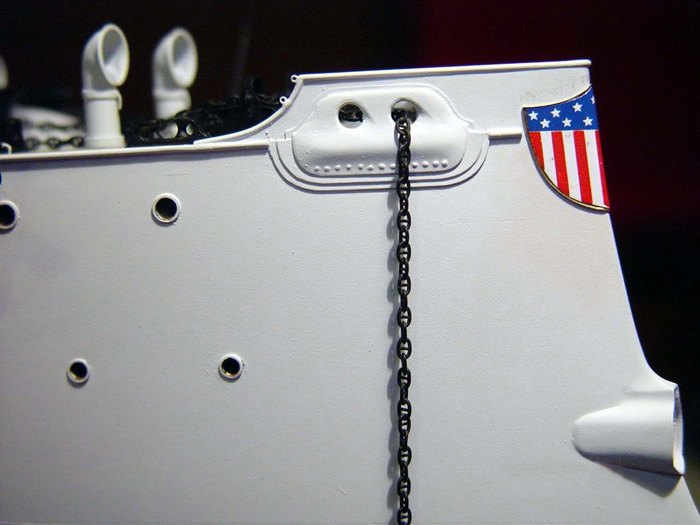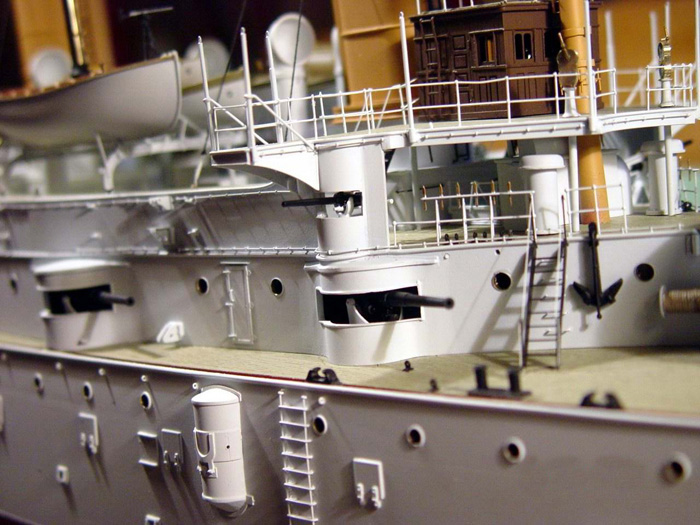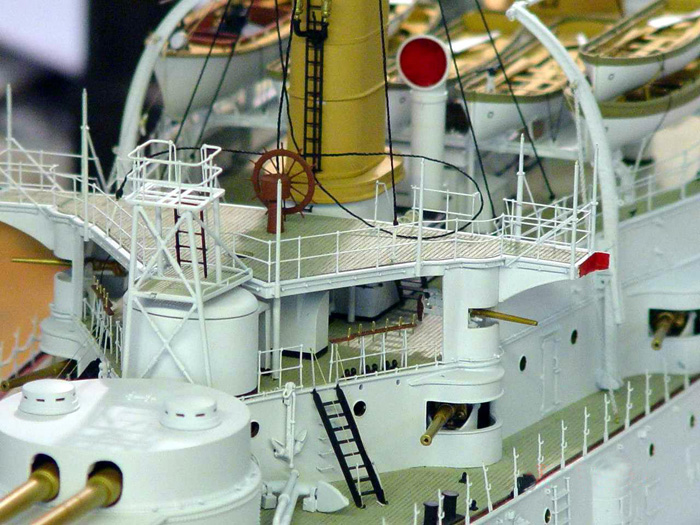Olympia
Protected Cruiser USS Olympia
- Scale: 1:96
- Release: 2003
- Limited Edition: 50
- Model Size: 44”L x 8”W x 19”H
- Base Type: Black Walnut
- Base/Case Size: 48”L x 12”Wx 20”H
- Availability: Sold Out
USS Olympia
The ambassador to England called it “a splendid little war.” At the cost of only 460 soldiers sustained in only three (3) battles—two (2) at sea and one (1) on land, the United States took possession of two (2) Spanish colonies in which it maintains bases to this day, and emerged, for the first time, as an important worldwide naval power. The celebrated first battle was fought in Manila Bay, Philippine Islands, where the flagship was a ship that may still be visited today: the protected cruiser USS Olympia.
Constructed at San Francisco’s Union Iron Works and commissioned in 1895, the 344’1″ Olympia displaced: 5,870 tons, with a beam of 53′ and a draft of 24’10” fully loaded. She was designed as a fast commerce raider, with a 19-knot cruising speed and 13,000 nautical mile range, essential for a coal-fired ship in this role.
Named for the capital of Washington State, USS Olympia’s first commission was as flagship of the Asiatic Fleet. In 1898, she came under command of Captain Charles V. Gridley and flew the flag of Commodore George Dewey. At the time, Spanish-American relations were strained by Spain’s treatment of Cuban nationalists and the loss, by explosion, of USS Maine at Havana
Harbor, was seen by many as an excellent pretext for a war. In the Far East, such a war would be centered on the Spanish colony of the Philippines, the seizure of which would further enhance America’s position as a world power.
War began on April 25 and two (2) days later Dewey received orders to proceed to Manila. In addition to Olympia, he had, under his command, the cruisers Baltimore, Raleigh, and Boston, and the gunboats Petrel and Concord. Manila was weakly defended by a poorly maintained, inadequately trained Spanish squadron consisting of Rear Admiral Patricio Montojo’s flagship, the cruiser Reina Christina, which mounted six (6) 6.2-inch guns (and was only half as big as Olympia), together with the wooden cruiser Castilla and five (5) gunboats. After slipping unseen into Manila Bay on May 1, Dewey’s ships came under fire at a range of about 9,000 yards. As he later recalled: “At 5:40 when we were within a distance of 5,000 yards, I turned to Captain Gridley and said, `You may fire when you are ready Gridley.’ … The very first gun to speak was an 8-inch … of the Olympia.” The gunnery was appalling on both sides in Dewey’s fleet, only 2.4 percent of the 5,859 shells expended hit their targets but, after two hours, the two (2) largest Spanish ships had been sunk, and most of the rest were either sinking or burning. Dewey resumed shelling at 1100, and Montojo surrendered at 1230. Only one American sailor was killed. Returning to Hong Kong on May 20, Olympia sailed for New York by way of the Suez Canal and Mediterranean, and arrived to a hero’s welcome on October 10, 1899.
Three years later, Olympia became flagship of the Caribbean Division, North Atlantic Squadron, and later alternated between assignments in the Atlantic, Mediterranean, and Caribbean. Withdrawn from service in 1906, except for midshipmen cruises from Annapolis between 1907 and 1909, in 1912 she became a barracks ship at Charleston, South Carolina. As war with Germany threatened, she was re-commissioned in 1916 and sailed on convoy duty in the North Atlantic. Following the Brest-Litovsk Treaty between Russia and Germany and the start of the Russian Revolution, Olympia was dispatched to Archangel and Murmansk to help garrison those northern ports against Bolshevik intrusion.
With the end of World War I, Olympia moved to the Mediterranean, and between 1918 and 1920 spent most of her time helping to quell disturbances along the Adriatic coast of Yugoslavia, which had come into being with the collapse of the Austro-Hungarian Empire. Olympia’s last overseas mission was to carry the remains of World War I’s Unknown Soldier from Le Havre to Washington, D.C., for interment at Arlington National Cemetery. Decommissioned and preserved as an historic ship at Philadelphia in 1922, she was taken over by the Cruiser Olympia Association in 1957. Today she sets in Philadelphia Harbor at the Independence Seaport Museum where it is planned to do a complete restoration of the ship.
